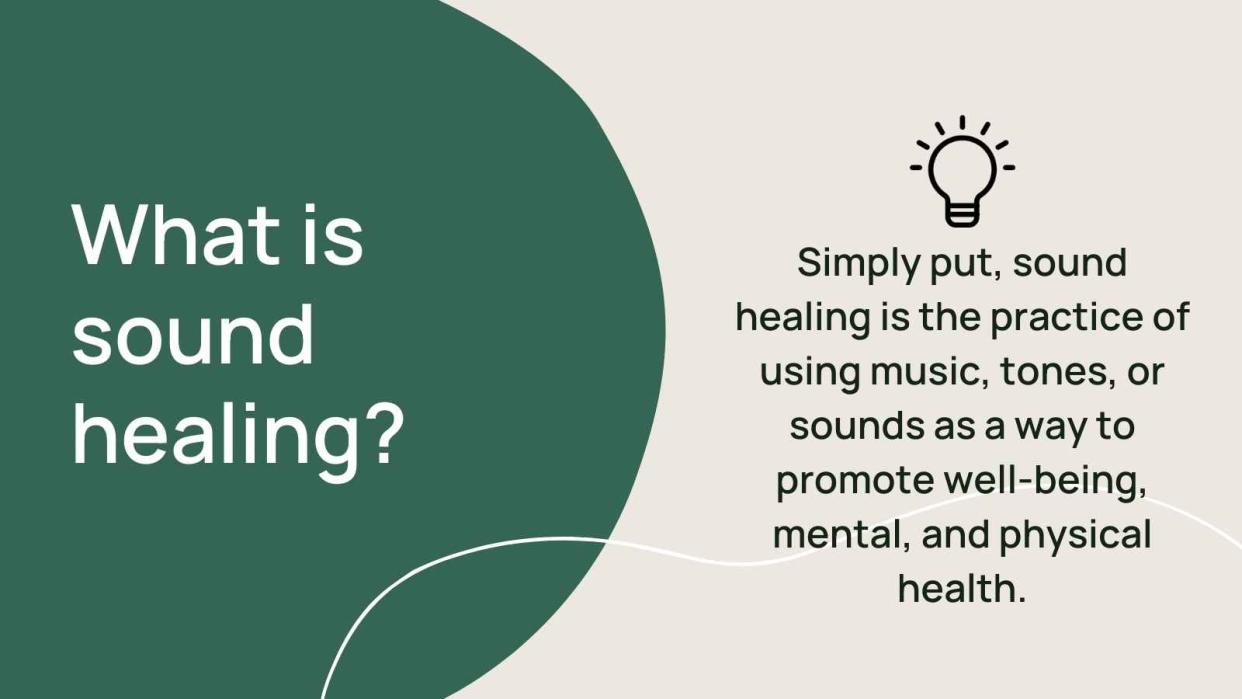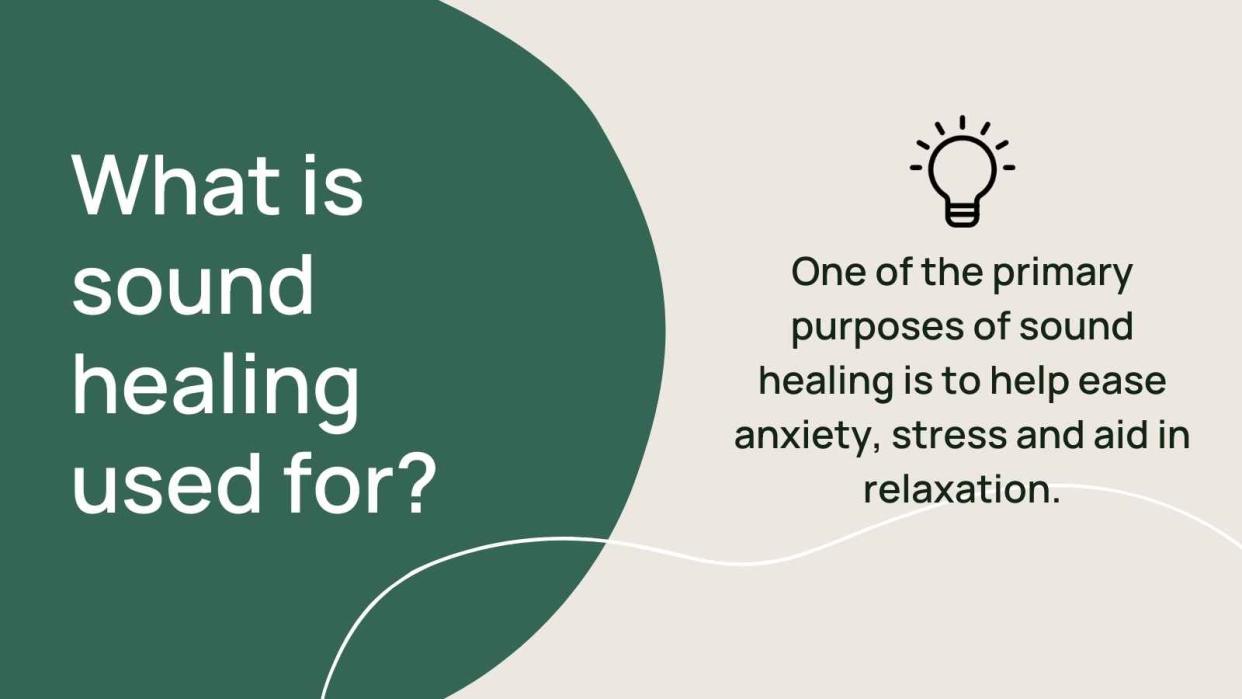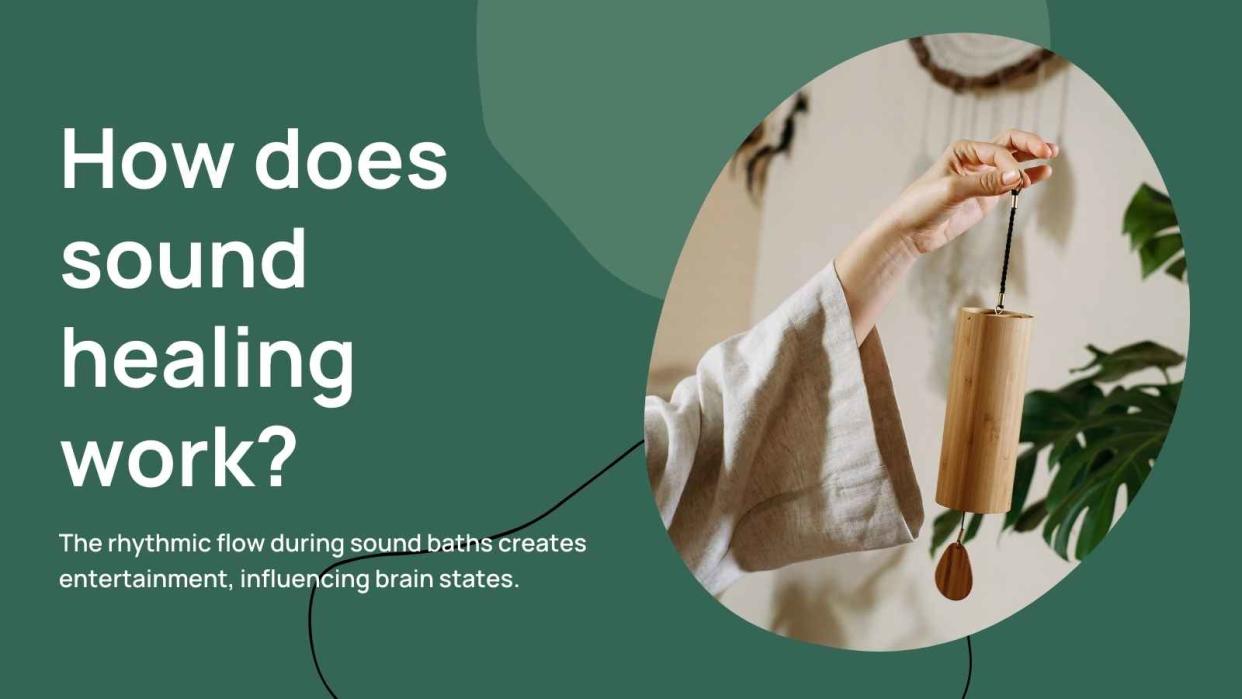110 Hz and Other Sound Healing Frequencies Explained

Key Takeaways:
Certain sounds and frequencies are known to be healing, with some sounds in the human voice range especially appealing.
Some ancient civilizations chanted in acoustic settings that reverberated particularly well at 110 Hz.
Some studies even suggest that the prefrontal region in the brain becomes more active when listening to this sound frequency.

Have you ever felt moved or inspired when listening to your favorite song? Or, perhaps experienced a calm mood from the soothing sound of rain?
Sound affects our brain and body in fascinating ways. As an audiologist, I know how sound can impact someone’s life. Our ears and auditory system are hardwired to pick up sounds in the speech frequency range. Research shows the powerful effect that sound can have on our nervous system and physiology. This article will explore sound healing, how it contributes to well-being, the role 110 Hz has on healing, and how to access sound healing.
What is sound healing?

Simply put, sound healing is the practice of using music, tones, or sounds as a way to promote well-being, mental, and physical health.
Sound healing is rooted in ancient practices used for thousands of years across different cultures and traditions. For example, the Australian Aboriginal culture uses the didgeridoo, a low-frequency instrument, as a part of their healing rituals.
So, how does sound healing fit into wellness? This practice has been incorporated into meditation for enhanced well-being for thousands of years, such as with Himalayan or Tibetan singing bowls. Sound healing practice involves using sound resonances and specific frequencies to help relax the mind and body. Certain civilizations even hypothesized that these sounds could stimulate the natural healing process.
What is sound healing used for?

One of the primary purposes of sound healing is to help ease anxiety, stress and aid in relaxation. Meditation practice has excellent benefits for your overall well-being. Some practitioners even recommend sound healing as a helpful method to process emotions, anxiety, or manage sleep disorders.
Which means that sound has some very helpful—and supportive—properties. Sound connects us to feelings of joy, relaxation, and connectedness. There are many reasons we feel stress in our daily lives, and sound healing is one helpful tool for stress management.
How does sound healing work?

The theory behind sound healing is that when the body is out of balance, sound healing can help to harmonize or bring the body back into balance. Traditionally, sound healing is created through singing bowls, gongs, chimes, and other instruments. Similarly to meditation, sound healing works by creating a rhythm and pattern that helps to change the brain state.
During meditation, the breathing pattern's rhythm helps shift the brain into relaxation or meditation states. Regular, alert brain activity is a beta state and in a more relaxed state, the brain goes from beta to alpha (relaxed) or theta (meditative) states.
And, how does sound healing achieve the same result as meditation? The rhythmic flow during sound baths creates entertainment, influencing brain states. Some sounds are intrinsically soothing and lend themselves to a calming, relaxing state.
How can I access sound healing?

Sound healing can be accessed through various options, such as gongs, chimes, sound baths, or instrumental music. Both live music and recorded sounds are equally effective. Sound healing can also be used as a meditation tool, where sounds are used to quiet the mind and still the body. During sound healing, individuals are immersed in rhythmic sound experiences, which promotes relaxation.
Using sound healing at home? Pro tip: Reduce background noise to maximize the effect when listening through headphones. Noise-canceling headphones are an excellent option to consider.
Does nature have a healing sound frequency?

Many healing centers and yoga studios incorporate nature sounds into their therapy and meditation practices. Recently on social media, green noise and other noise colors have gained popularity. Green noise is quickly becoming much-loved, as green noise mimics natural sounds like rain, waves on the beach, gentle winds, and more. Some patients find using white noise or different noise colors can help with tinnitus management and even heightens focus.
Beyond traditional sound methods, nature provides other examples of healing sound frequencies. Studies have shown that natural sounds, such as ocean waves, birdsong, and rainfall can promote a sense of calm and relaxation. While nature sounds may include a variety of frequencies, many people find these lower-frequency sounds especially soothing.
Conclusion
Sound healing can be a powerful tool for stress management and emotional well-being. Whether through live music, recorded sounds, or nature, sound healing provides an immersive experience that shifts the brain to a more relaxed state. 110 Hz, in particular, has been shown to help with emotional processing and relaxation, making it an exciting option to consider for individuals looking to experience the power of sound healing.
It is also worth noting that ancient civilizations deeply understood and appreciated sound frequencies and their impact on emotions and health. In conclusion, consider incorporating sound healing into your routine to reduce stress or bring more relaxation into your daily life.
